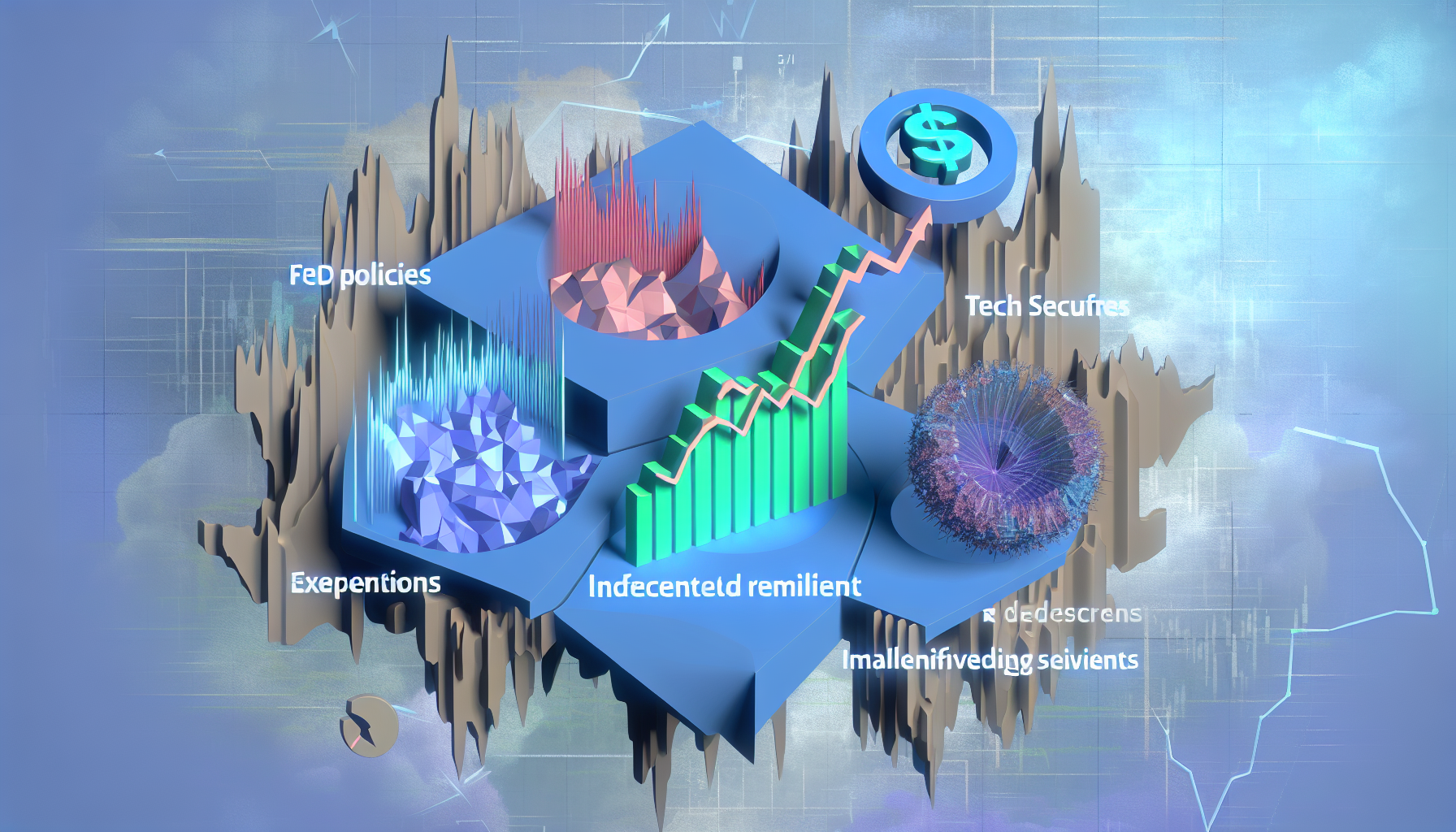
#StockMarketUpdate #FedExpectations #TechSectorGrowth
Stock Market Wrap-Up: December 16, 2024
As the trading day came to a close on December 16, 2024, the stock market presented a mixed bag of results, reflecting the complex interplay of investor sentiment, economic indicators, and sector-specific performance.
Benchmark Performance
The Dow Jones Industrial Average ($DJI) ended the day on a slightly sour note, ticking down 86.06 points, or 0.2%, to close at 43,828.06. This decline was driven by 17 of the 30 components of the index ending in negative territory, while 13 managed to close in the green[1].
In contrast, the tech-heavy Nasdaq Composite ($IXIC) showed resilience, gaining 23.88 points, or 0.1%, to close at 19,926.72. This modest gain underscores the continued optimism in the technology sector, which has been a bright spot in recent market activity[1].
The S&P 500 ($SPX) remained virtually unchanged, closing at 6,051.09. However, beneath this stable surface, eight of the 11 broad sectors of the benchmark index closed in the red. The Communication Services Select Sector SPDR ($XLC), the Materials Select Sector SPDR ($XLB), and the Energy Select Sector SPDR ($XLE) fell 1.2%, 0.9%, and 0.5%, respectively. On the other hand, the Technology Select Sector SPDR ($XLK) rose 0.4%, highlighting the sector's ongoing strength[1].
Investor Sentiment and Volatility
The fear-gauge CBOE Volatility Index ($VIX) decreased 0.8% to 13.81, indicating a slight easing in market anxiety. This reduction in volatility is a positive sign, suggesting that investors are becoming more comfortable with current market conditions[1].
Trading volumes told a different story, however. A total of 12.6 billion shares were traded on Friday, which is lower than the last 20-session average of 14 billion. This decrease in trading activity could indicate a cautious approach by investors as they await further economic data and Federal Reserve decisions[1].
On the New York Stock Exchange (NYSE), decliners outnumbered advancers by a 2.23-to-1 ratio, a clear indication of the mixed sentiment prevailing in the market. The Nasdaq Composite recorded 75 new highs and 199 new lows, further highlighting the dichotomy in market performance[1].
Weekly Roundup
Looking back at the week, the three most widely followed indexes painted a varied picture. The S&P 500 fell 0.64%, while the Nasdaq rose 0.34%. The Dow Jones Industrial Average took the biggest hit, falling 1.82%. These movements were largely driven by expectations surrounding the Federal Reserve's December meeting and the ongoing positive run of technology stocks[1].
Economic Indicators and Fed Expectations
The absence of any significant economic data on Friday meant that investors were left to ponder the implications of recent inflation numbers. The optimism about a potential rate cut from the Fed's December meeting continued to influence market sentiment. Lower interest rates can be a boon for stocks, especially in sectors that are highly sensitive to borrowing costs, such as technology and consumer discretionary.
Fear and Greed Index
To gauge the broader sentiment, the Fear and Greed Index, developed by CNN Business, provides valuable insights. This index ranges from 0 (extreme fear) to 100 (extreme greed) and is calculated based on seven distinct factors:
- The number of stocks hitting 52-week highs relative to those hitting 52-week lows.
- Trading volumes of rising stocks versus declining stocks.
- The performance of the S&P 500 relative to its 125-day average.
- The Chicago Board Options Exchange put/call ratio.
- Stock price momentum.
- Stock price breadth.
- Safe-haven demand and junk bond demand[3][5].
When investors are fearful, they tend to sell, driving stock prices down to potentially undervalued levels. Conversely, excessive greed can push prices up, making them overvalued. The Fear and Greed Index acts as a contrarian indicator, suggesting that fear is a buy signal and greed is a sell signal.
Market Volatility and Investor Behavior
Market volatility is a natural and inherent part of stock markets. It reflects the constant flux in supply and demand, influenced by a myriad of factors including macroeconomic indicators, company-specific news, and geopolitical events. High volatility can present both risks and opportunities for investors. While it can lead to significant gains, it also increases the risk of substantial losses[4].
Investor emotions, particularly fear and greed, play a crucial role in market movements. Fear can lead to panic selling, driving prices down, while greed can result in speculative buying, pushing prices up. Managing these emotions and maintaining a long-term perspective is essential for navigating the volatile landscape of the stock market.
Conclusion
As the stock market closed on December 16, 2024, it was clear that investors are in a state of cautious optimism. The mixed performance of the benchmarks, coupled with the ongoing strength in technology stocks and the anticipation of Fed decisions, sets the stage for an intriguing end to the year.
For investors, understanding the interplay between economic indicators, sector performance, and investor sentiment is key. The Fear and Greed Index serves as a valuable tool in gauging market emotions and making informed investment decisions.
As we move forward, keeping a keen eye on economic data, Fed policies, and the broader market sentiment will be crucial. The stock market's ability to adapt and evolve in response to changing conditions is a testament to its resilience and the opportunities it presents for investors who are prepared and informed.









Leave a Reply